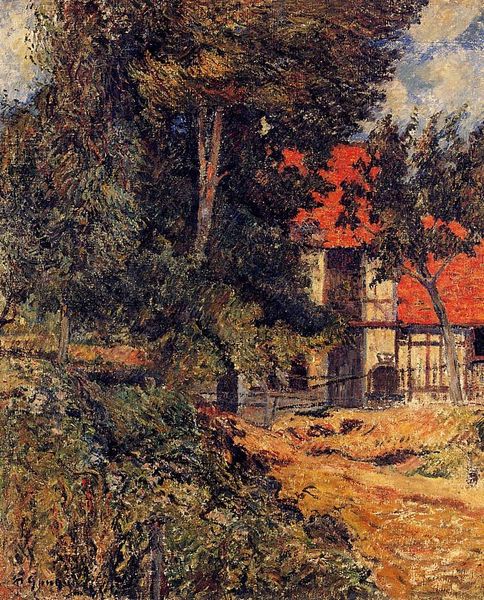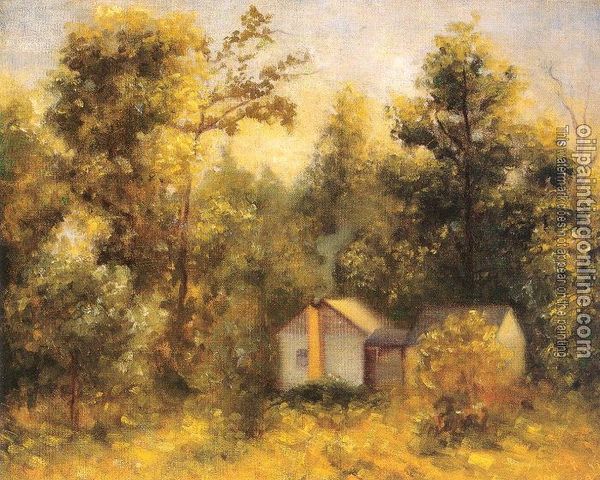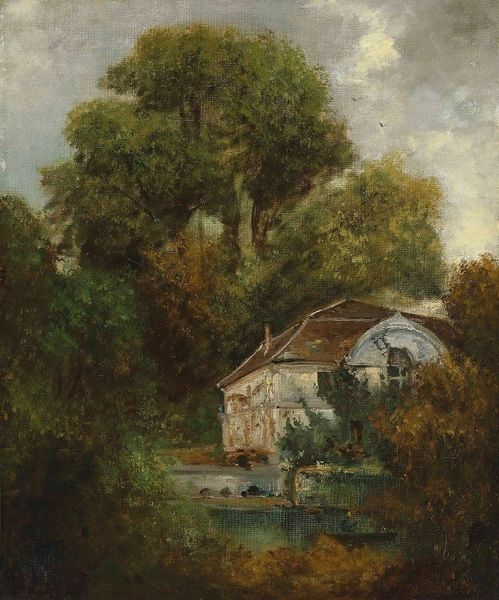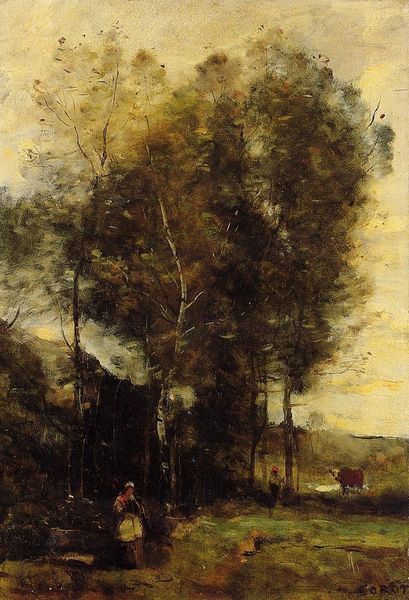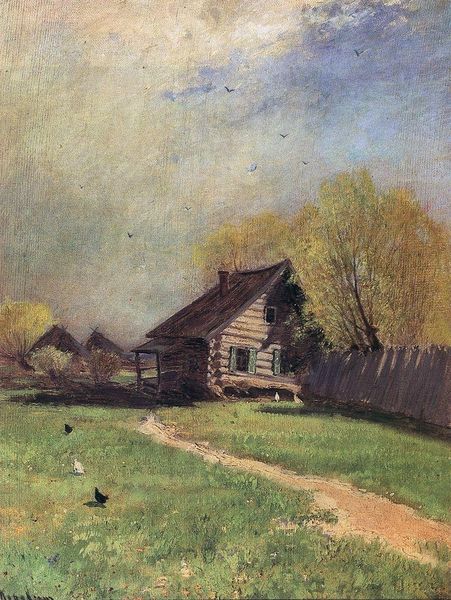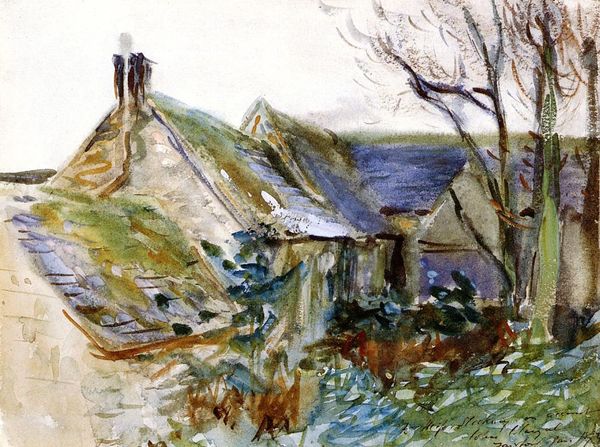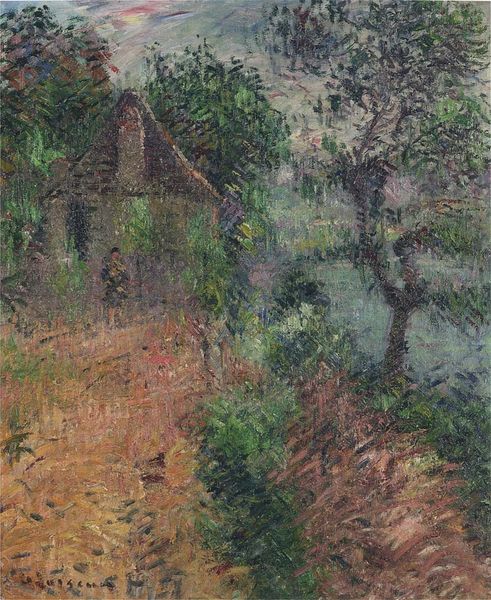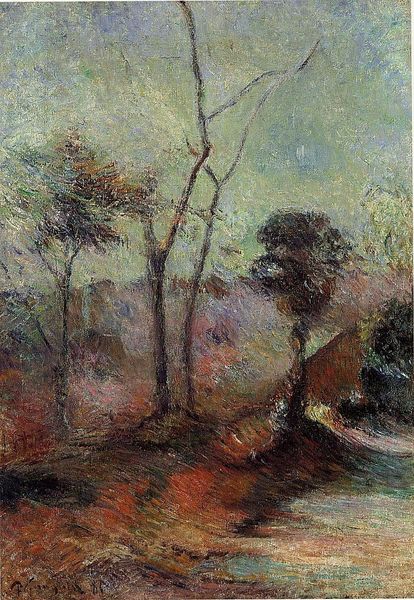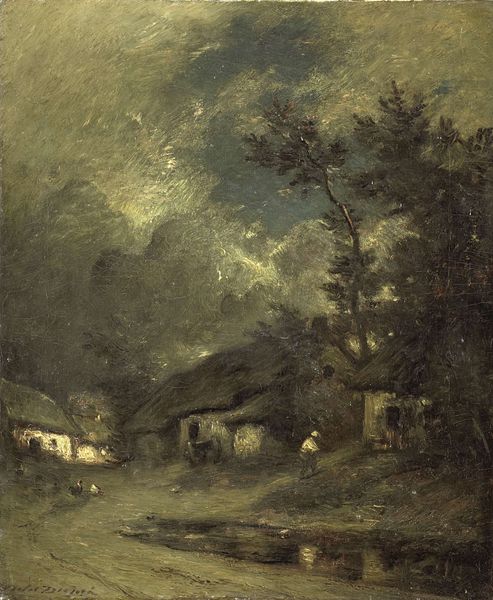
Copyright: Public domain
Editor: This is Camille Corot’s "Luzancy, the Path through the Woods," painted in 1872 using oil paint. It strikes me as quite dark and brooding, a very enclosed scene. How do you interpret this work? Curator: Considering the work formally, observe the strategic interplay between light and shadow. Note how Corot constructs the composition by juxtaposing the angular architecture of the building with the fluid, organic forms of the trees. The limited palette also guides our perception. How does that strike you? Editor: I see what you mean. It’s like the house and nature are in a visual dialogue. The muted colors almost blend the man-made with the natural. It feels less like a clear depiction and more like a mood. Curator: Precisely. Corot uses the interplay of these forms to examine how a sense of space is created. The figures are minute and positioned to the side, drawing your eye into a deeper focal plane which is almost monochromatic. How effective do you think this use of colour is? Editor: Very! The subtlety almost forces you to look closer, past the obvious subject matter, and it's as if the forms are more felt than clearly seen. It becomes about the relationships of tone and texture more than just what's depicted. Curator: An insightful observation. Corot isn't merely representing a landscape but analyzing pictorial space and its emotional resonance through these forms and colour relationships. He constructs it almost as a poem, with the formal properties contributing to the feeling it provokes in the viewer. Editor: That really shifted how I see it; the initial darkness gives way to the beauty of Corot’s design. Curator: Indeed, a close examination allows one to appreciate the complex orchestration of form and light inherent in the work.
Comments
No comments
Be the first to comment and join the conversation on the ultimate creative platform.

